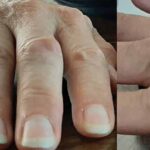Previous studies have shown that the rheumatoid joint is highly enriched for citrullinated proteins. Studies have also shown that citrullinated proteins can activate danger signals when they are part of immune complexes. Moreover, researchers know that patients with rheumatoid arthritis (RA) have citrullinated autoantigens, which have been generated by the activation of peptidylarginine deaminases (PADs). The mechanism behind the activation of PADs, however, remains murky.
New research has focused on the role of membranolytic pathways in the cellular and humoral immune response. The result: It appears that PADs are activated via complement and perforin activity resulting in the formation of citrullinated autoantigens. The findings have important implications for RA.
Violeta Romero, PhD, of Johns Hopkins University School of Medicine in Baltimore, and colleagues described the two pathways that lead to the formation of citrullinated autoantigens in the Oct. 30, 2013, issue of Science Translational Medicine.1
The authors examined RA synovial fluid for clues to identify the triggers of protein citrullination. Healthy joints contain a small number of proteins that are citrullinated in response to cell death or inflammation. The authors found that cells from the joints of patients with RA contained a wide range of citrullinated proteins, wider than those found in the joints of healthy patients.
The authors examined 20 stimuli that are known to promote inflammatory pathways active in the rheumatoid joint. They found that only two of these stimuli reproduce the hypercitrullination found in patients with RA. The two distinct pathways that can lead to cellular hypercitrullination in RA are: 1) the perforin pathway, and 2) the membrane attack complex (MAC) pathway. Their research suggests that a particular membroanalytic pathway may dominate in a given individual at a particular time thereby leading to a vulnerability to RA.
“Protein citrullination is suspected of sparking the immune system and driving the cascade of events leading to the disease. It is, therefore, possible that perforin and complement may be at the core of disease initiation in RA. Indeed, we believe that understanding the mechanisms responsible for abnormal activation of these pathways in RA may lead to the identification of the earliest components that initiate the disease process,” explained author Felipe Andrade, MD, PhD, also of Johns Hopkins University School of Medicine in an email to The Rheumatologist.
Dr. Andrade also pointed out that their study highlights potentially novel targets for monitoring and treating RA.
In their paper, the authors also report that “physiological” citrullination may differ from “pathological” citrullination, both quantitatively and qualitatively. For example, they were unable to reproduce hypercitrullination in the RA joint using neutrophil extracellular traps (NETs).

